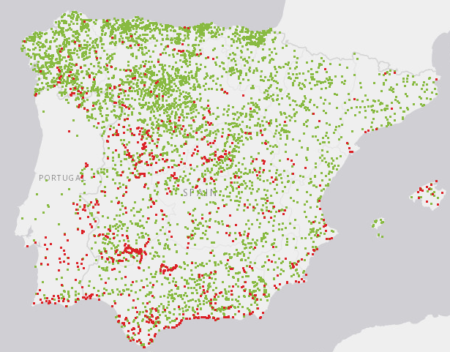- Molecular and cytological characterization of the global Musa germplasm collection provides insights into the treasure of banana diversity. 16% of 1500 accessions need taxonomic verification. Could have been much worse.
- Why the Donkey Did Not Go South: Disease as a Constraint on the Spread of Equus asinus into Southern Africa. Gap in distribution between Kenya and southern Africa until colonial times probably down to trypanosomiasis.
- Origins of house mice in ecological niches created by settled hunter-gatherers in the Levant 15,000 y ago. Hunter gatherers inadvertently domesticated the mouse.
- The genome landscape of indigenous African cattle. Now we know where the genes for heat tolerance and tick resistance can be found, and it’s where you’d think.
- Insights into early pig domestication provided by ancient DNA analysis. In northern Europe, around 4000 BC, people started crossing pigs from the south with local wild boars. What were they thinking?
- Recent grassland losses are concentrated around U.S. ethanol refineries. The revenge of geography.
- Provitamin A biofortification of crop plants: a gold rush with many miners. “One crucial aspect that needs further experimentation is whether β-carotene-fortified crops can improve vitamin A status in the main targets of the biofortification efforts, that is, malnourished adults and children.” Just going to leave that out there.
- Genomic innovation for crop improvement. Longer reads needed. Is there no satisfying these gene-jockeys?
- Biodiversity redistribution under climate change: Impacts on ecosystems and human well-being. Species movements affect ecosystem functioning and service provision: “The indirect effects of climate change on food webs are also expected to compound the direct effects on crops.”
- Feeding the Household, Growing the Business, or Just Showing Off? Farmers’ Motivations for Crop Diversity Choices in Papua New Guinea. Some people grow lots of crops because it’s cool. But why wasn’t this done at the intraspecific level?
- To Specialize or Diversify: Agricultural Diversity and Poverty Dynamics in Ethiopia. Forget coolness, crop diversity makes you less poor.
- Biogeography of nodulated legumes and their nitrogen-fixing symbionts. Australia is weird.
- Plantations, outgrowers and commercial farming in Africa: agricultural commercialisation and implications for agrarian change. They all have their place.
- Genomic history of the origin and domestication of common bean unveils its closest sister species. Wild populations from northern Peru and Ecuador are not derived from wild Phaseolus vulgaris which migrated there from Mesoamerica but are actually a different species which predates the evolution of wild common bean.
- Genomic inferences of domestication events are corroborated by written records in Brassica rapa. Five genetic groups, with rapini at the base.
- Walking and talking the tree of life: Why and how to teach about biodiversity. Forget ranks, try clades.
The rain in Spain falls mainly on genebank accessions
The last couple of weeks have been all go. Last week I was at IRRI in the Philippines, but I’ve blogged about that genebank before here, so I won’t say much more about it now, save that they have a cool new automated seed sorter. And of course the breeders whom the genebank serves have been very busy, and successful.
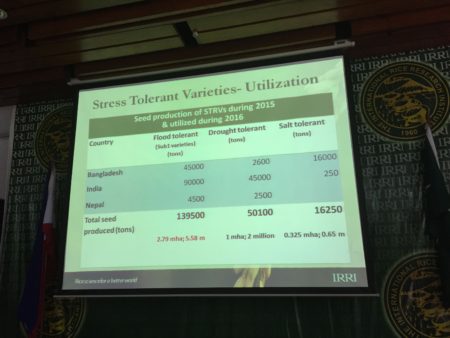
Then this week I visited the Spanish national genebank at the Centro Nacional de Recursos Fitogenéticos of the Instituto Nacional de Investigación y Tecnología Agraria y Alimentaria, just outside the historic town Alcalá de Henares, not far from Madrid. It’s been going since the early 1980s, and it forms the hub of a network of 37 collections spread out all over the country. As such, it aims to provide centralized long-term conservation for the country’s seed collections, as well as managing the national inventory, which feeds data into Eurisco and thence Genesys.
Great visit to #INIA #genebank just outside Madrid talking @cropwildrelativ project pic.twitter.com/ePFoNpS6QM
— AgroBioDiverse (@AgroBioDiverse) March 29, 2017
Over the years, they have done a great job of collecting crops all over the country, from people such as these.
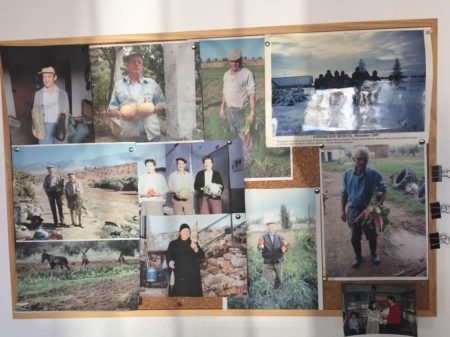
Significant gaps remain in their holdings of wild relatives, though, hence our visit. This map, from Genesys, gives you an idea of overall coverage. Wild relative accessions are in red.
Pretty impressive. And the current effort to address gaps in the collections of key crop wild relatives will make it even more so.
In addition to the germplasm collection, CRF also houses a fascinating reference collection of wheat spikes, dating back to the 1950s, whose labelling betrays something of a predilection for taxonomic splitting.
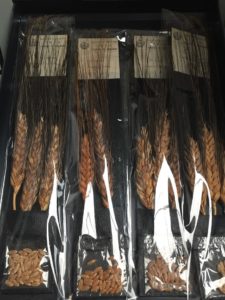
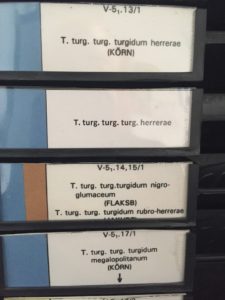
Thanks to Luis Guasch, Lucia de la Rosa, and the whole team for the hospitality, and all the hard work safeguarding Spain’s agricultural diversity.
Nibbles: Mango genebank, Japanese elite fruit, Mother Hass, African cattle diversity, New wild ginger, Seed saving, False ivory, ABS, Deforestation, Blight causes, Desert ag, Conserving potatoes, Imperial botany
- Goa to set up a mango genebank. Where do I donate?
- The murky world of really expensive Japanese fruit.
- What is this one avocado tree worth?
- The importance of indigenous African cattle breeds.
- You can never have too many wild ginger species.
- Saving seeds in South Carolina.
- Seeds save elephants.
- IFPRI meeting discusses the increasing complexity of germplasm access and benefit sharing.
- Food giants look to their greenify their value chains. Will they finally decide to secure their genetic base too?
- Irish potato famine: don’t blame the near-fungus.
- Chinese oasis is engineering wonder: and the crops?
- Pachamama and the ever-so-humble potato.
- Review of book on the imperial origins of botany.
Brainfood: Soil biodiversity maps, VIR wheat, Rice worlds, African maize, Cold rice, Saharan history, Oil palm & CC, GM Cavendish
- Assessing soil biodiversity potentials in Europe. The hotspots are the pastures and grasslands of Ireland, Slovenia and Sweden.
- Into the vault of the Vavilov wheats: old diversity for new alleles. VIR has diversity that’s not in CIMMYT and Australian cultivars. No word on where ICARDA fits in.
- Disembedding grain: Golden Rice, the Green Revolution, and heirloom seeds in the Philippines. There are parallel and competing rice worlds, which differ in how they valorize the local. Or, it could be argued, though not by the authors, demonize the “other.”
- Microsatellite DNA marker for molecular characterization of African maize (Zea mays L.) landraces. The Somali material is weird.
- Genetic architecture of cold tolerance in rice (Oryza sativa) determined through high resolution genome-wide analysis. 42 QTLs. Is that a lot? It seems like a lot.
- Humans as Agents in the Termination of the African Humid Period. Damn livestock. Back to hunting and gathering.
- Future climate effects on suitability for growth of oil palms in Malaysia and Indonesia. Well that’s ironic.
- Golden bananas in the field: elevated fruit pro-vitamin A from the expression of a single banana transgene. Gene from Fe’i biofortifies Cavendish. Now to do something about taste, texture, general suckiness etc etc.
Brainfood: Silk Road herders, Canadian erosion, Trees & ag, Wheat CWR, Maize adaptation, Stock collections, Tunisian barley, Seed testing, Rosaceae evolution, MRCA, Deforestation
- Nomadic ecology shaped the highland geography of Asia’s Silk Roads. Goat Roads doesn’t have the same ring to it.
- Agro-biodiversity has increased over a 95 year period at sub-regional and regional scales in southern Quebec, Canada. It’s all in the definition.
- Trees for life: The ecosystem service contribution of trees to food production and livelihoods in the tropics. Meta-analysis shows trees and forests are good for crop yields and livelihoods.
- Discovery and characterization of two new stem rust resistance genes in Aegilops sharonensis. Chipping away at Ug99.
- A study of allelic diversity underlying flowering-time adaptation in maize landraces. That’s a lot of genes.
- The challenges faced by living stock collections in the USA. Money, mainly.
- Low Genetic Differentiation and Evidence of Gene Flow among Barley Landrace Populations in Tunisia. One big happy family.
- Rethinking the approach to viability monitoring in seed genebanks. From germination tests to automated seed storage experiments.
- Evolution of Rosaceae Fruit Types Based on Nuclear Phylogeny in the Context of Geological Times and Genome Duplication. A story of whole genome duplications.
- Reconstructing the genome of the most recent common ancestor of flowering plants. The mother of all crop wild relatives, before all those duplications, has 23,000 genes and is 214 million years old.
- What Drives Deforestation and What Stops It? A Meta-Analysis. Money, and money, respectively.
